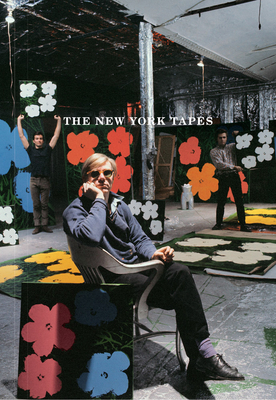
The New York Tapes: Alan Solomon's Interviews for Television, 1965-66
Description
Previously unpublished interviews with some of America's leading postwar artists--including Frankenthaler, Johns, Oldenburg, Rauschenberg, Stella and Warhol--originally conducted for TV in the mid-'60s by famed curator Alan Solomon
This substantial volume publishes for the first time a series of interviews conducted with seminal East Coast artists and their associates, including Kenneth Noland, Jim Dine, Roy Lichtenstein, Marcella Brenner, Helen Jacobson, Clement Greenberg, Helen Frankenthaler, Larry Poons, Frank Stella, Robert Rauschenberg, Jasper Johns, Claes Oldenburg, Barnett Newman, Leo Castelli, Andy Warhol, Gerard Malanga and Edie Sedgwick. These were produced in late 1965 and early 1966 for the documentary television series USA: Artists by famed curator Alan Solomon, who was a regular fixture in the New York art world of the time. This was a logical extension of Solomon's recent curatorial involvements, including most importantly his organization of the United States exhibition at the 1964 Venice Biennale.
The half-hour format of the episodes meant that a vast amount of Solomon's original interviews, some of which lasted an hour or more, wound up on the cutting-room floor. At some point after the series was completed the original filmed and tape-recorded interviews were lost. A single set of typed transcripts, preserved in the Alan R. Solomon papers at the Archives of American Art, a branch of the Smithsonian Institution (copublisher of this volume), is the sole complete record of the original interviews.
The New York Tapes gathers these interview transcripts and publishes them as a group for the first time, extensively illustrated with numerous stills from the television programs and related documentation. The transcripts make available material that was not included in the final programs, while also revealing how what was included became subtly manipulated to fit the format of documentary television. An informative introduction by editor Matthew Simms sets the project in context and highlights the differences between the interviews and the films, shedding new light on a germinal moment in postwar American art and how it was presented to the public.
